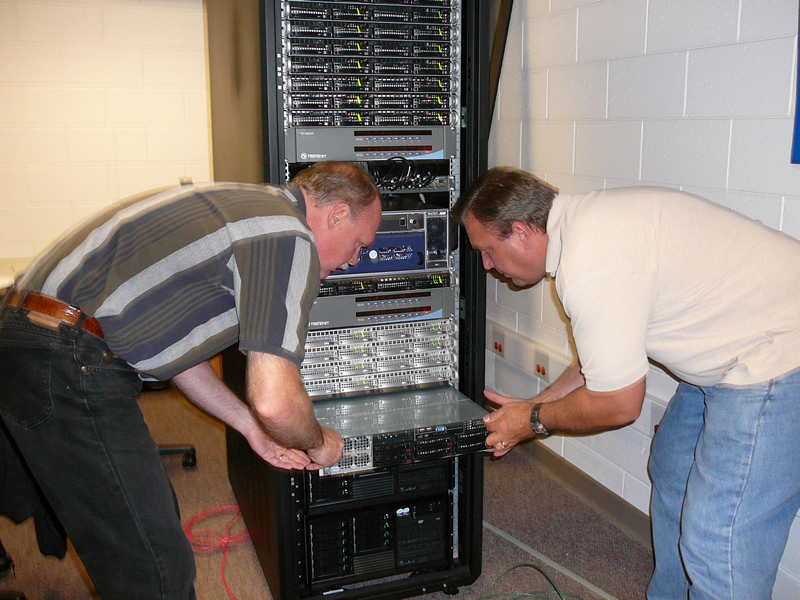Dahl the supercomputer to be replaced in January
Computer science professor Joel Adams designed Dahl in 2007 and built it in 2008. Photo courtesy dahl.calvin.edu.
Thanks to a National Science Foundation (NSF) grant, Calvin will welcome another supercomputer onto campus this January, replacing Dahl, the current machine.
Built in 2008 for about $150,000, using funds from another NSF grant, Dahl currently allows researchers to create simulations, render molecular models and run complex algorithms that would otherwise take days to run on a standard desktop computer.
And computer science professor Joel Adams says that the new computer should be capable of performing tasks at least two times faster than Dahl.
The category of “supercomputer” is a relative one, says Adams, noting that today’s smartphones would have been considered supercomputers in the 1960s and ’70s. Generally, for a computer to be considered “super” it must be at least 100 times faster than a typical desktop machine.
Geography processor Jason VanHorn anticipates using the powerful new graphics processing unit to do complex 3-D urban analysis, rendering cityscapes in meticulous detail.
“I’m using pretty computationally heavy software and data sets that are enormous, approaching terabyte-sized,” he said. VanHorn’s previous research has included similar 3-D modeling of portions of downtown Grand Rapids cityscape for security purposes surrounding President Gerald Ford’s funeral.
Currently, biochemistry professor Doug Vander Griend’s lab uses Dahl’s overnight computing capabilities to collect data from tens of thousands of virtual experiments. Junior Nathanael Kazmierczak, who works under Vander Griend, says that Dahl carries out processes that would be impossible to do by hand.
Chemistry professor Mark Muyskens has already used Dahl extensively to model a class of fluorescent chemical compounds often produced by trees. He says that the new, faster system will allow him to model a greater number of these compounds, giving him a better understanding of what certain compounds fluorescent.
Inside the third floor Science Building room where Dahl is housed, the air is hot. Fans blow hot air out of the back of the tower while one, and sometimes, two air conditioning units keep the room from reaching 100 degrees Fahrenheit, according to Hazlett, who worked with Adams this past summer.
Dahl’s power comes mainly from its ability to split up problems to be solved by groups of its 368 processing cores. A typical laptop computer often only has four or eight cores. Hazlett says that Dahl is essentially the same as if one were to link up multiple desktop computers
Adams says that his interest in supercomputing is primarily ecological. He works to build systems which can solve problems much more quickly, eliminating the need to drawing electricity for days on a weaker system.
In 2000, Adams assembled another NSF-sponsored “Beowulf cluster,” named Ohm, after renowned physicist and mathematician Georg Ohm. Then, eight years later, Adams and others assembled Dahl to replace the aging Ohm.
Today, Adams is thinking of new names for the next tower. Among the namesake contenders are Anita Borg, an American computer scientist; Ada Lovelace, the first programmer; and Fred Brooks, who, Adams noted, was famous for comparing the joy of programming to that of God’s at creation.






